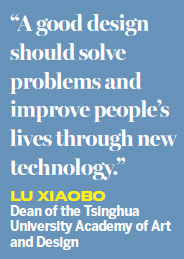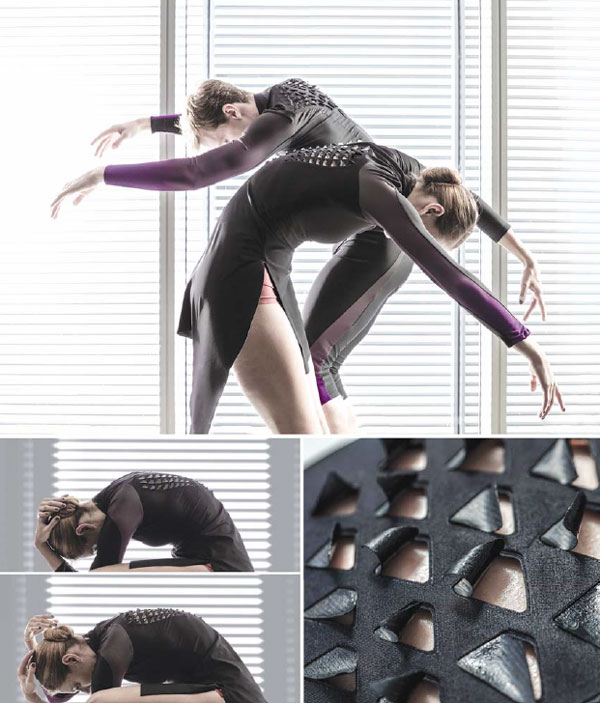Designs on the future
From a book that helps filter water to a poster that doubles as a lampshade, China's top design awards celebrate unusual ideas
The inventor of the Drinkable Book received the grand prize in this year's Design Intelligence Award, held in the eastern Chinese city of Hangzhou.
Theresa Dankovich's creation is made of advanced filter paper that can kill germs that cause deadly diseases like cholera and typhoid. The pages also contain instructions on water safety.
|
|
|
Above left: An air filter that can be placed on the floor-to-ceiling window. Provided to China Daily; Above right: Theresa Dankovich holds her Drinkable Book, which won the top prize. Wang Kaihao / China Daily |
To use the book, people pick out a page and pour water through it for drinking.
"Globally, about 3.4 million people a year die from water-related diseases, but the bigger problem is that most don't know that the water they are drinking is unsafe in the first place," says the US chemist after receiving her award on May 15.
"When I went to a village in Bangladesh and showed them my book, a woman was so determined to have it that she said, 'If my husband doesn't buy this for me, I will write poetry and sell it, so I can have this and my family will be healthy.' That's the best quote I have."
The annual design awards are organized by the government of Zhejiang province and the China Academy of Art, which is based in Hangzhou.
For Dankovich, the needs of local communities were more important than looks when she was developing the book.
"I've learned to listen, understand and then deliver a design that fits the local lifestyle and culture, not to cater to the top end of the market," she says.
In response to an award judge who said her book was too delicate for use in impoverished areas, she says future versions will have a plastic casing instead of the current hard cover, and the filters will be renewable.
Her product is now part of a pilot project at schools in Kenya and South Africa, and there are plans for it to be marketed there later this year at an affordable price, she says.
Other entries this year also attracted much attention, including one called Second Skin, which was developed at the Massachusetts Institute of Technology.

The product was described as breathable apparel; it can spontaneously expand and shrink in accordance with changes in the humidity and temperature of human skin. The project was among the award's 21 finalists.
Second Skin is still in development, but several sports brands in the United States have shown interest, says Wang Wen, a postdoctoral fellow at MIT, who has led development of the project.
"This is only a demo that is being used in sports facilities, but we want to touch more people's lives, like firefighters, soldiers and pilots."
Wang, who was born in Zhejiang, believes the mass manufacturing capacity of clothes in her home province can help turn her dream project into reality.
Song Jianming, a professor at the China Academy of Art and head of the award jury, says market potential was a crucial factor when it came to picking this year's winners, while protecting intellectual property rights was a priority.
The organizers received more than 2,000 designs from around the world. The art academy's Folk Crafts Museum in Hangzhou has about 200 works on display.
"No matter the size, a good design should solve problems and improve people's lives through new technology," Lu Xiaobo, dean of the Tsinghua University Academy of Art and Design and an award judge, says when asked about the other factors taken into consideration for the winners.
"A good idea is driven by observation. A designer shouldn't only be immersed in self-expression and ignore functionality."
Another judge, Zhao Jian, says while not every design can turn the world upside-down, attempting to enrich lives is a worthwhile effort.
Ono Naoki's work is a good example, he says. The Japanese designer's "poster lamp" failed to make the final shortlist, but received much praise at the event. The design mixes 2-D and 3-D spaces, and allows a poster to be turned into a lampshade that can be pasted onto a wall.
Chinese designer Zhu Xiaojie also entered a chair that uses a wooden cover to mask a thin metal frame. It can help reduce lumber consumption, improve a chair's capacity to bear weight and retain the original flavor of traditional Chinese furniture.

Looking at the future of the contest, Hang Jian, deputy director of the China Academy of Art, says: "We expect more ideas suitable for the future. In today's China, industrial design still focuses on large-scale production, but people's everyday needs also require equal attention."
As micro enterprises continue to grow, Hang believes designers will have the opportunity to turn their ideas into reality via multiple channels like crowdfunding.
Perhaps, with such efforts, it will not take too long to find the award-winning products on the market.
wangkaihao@chinadaily.com.cn
























